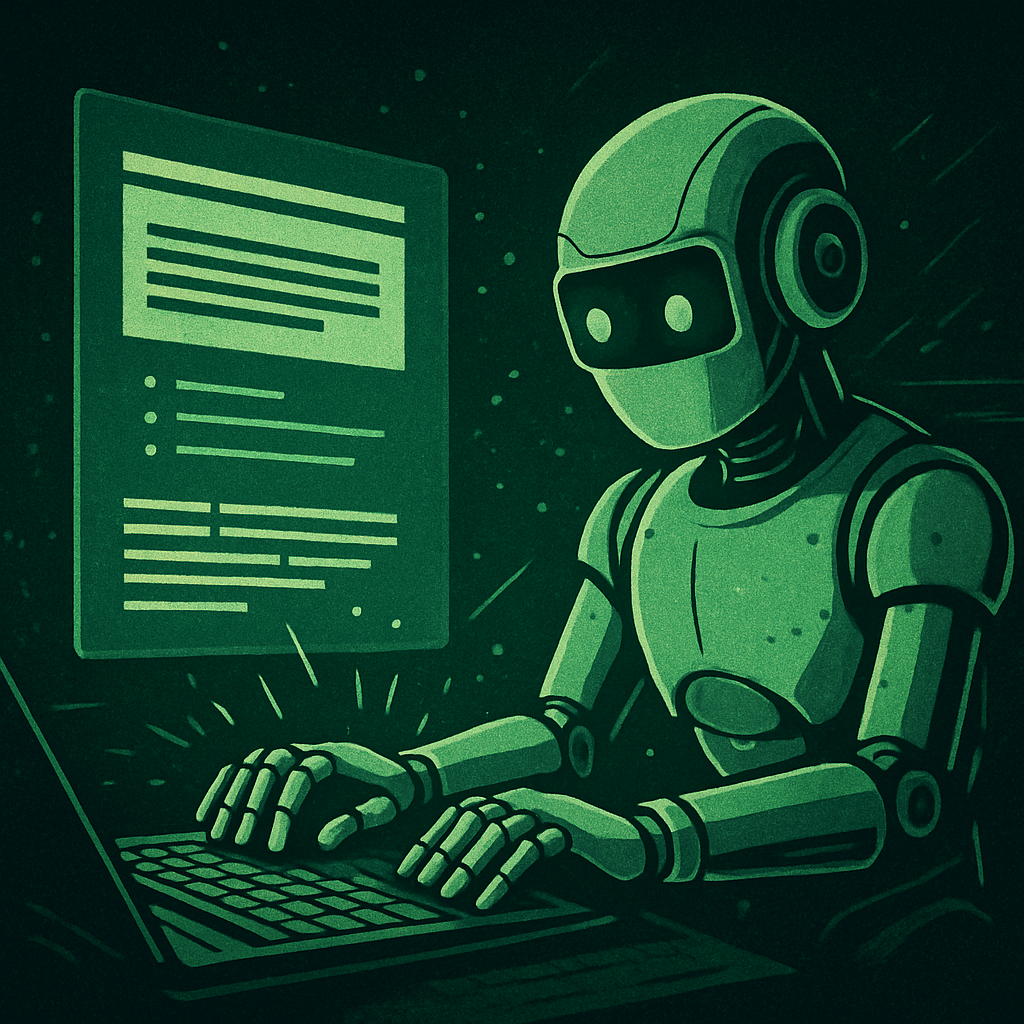Writing Better Documentation with AI Assistance: Clarity, Consistency, and Speed

👋 Hello, Fine Coders!
In the world of software development, code is king 👑, but documentation is its crucial crown. Without clear, consistent, and up-to-date documentation, even the most elegant code can become a tangled mystery 🕸️, hindering collaboration, onboarding, and long-term maintainability. Yet, writing documentation is often perceived as a tedious, time-consuming task ⏳, frequently pushed to the bottom of the priority list.
But what if we told you that the very AI tools revolutionizing code generation 🤖 can also revolutionize your documentation process? For the Fine Coder, leveraging AI assistance for documentation isn't about outsourcing responsibility; it's about amplifying efficiency, enhancing clarity, and ensuring consistency across all your projects. ✨
📚 The Documentation Dilemma: Why It's Hard and Why It Matters
Developers often face several challenges when it comes to documentation:
- ⏰ Time Constraints: Projects move fast, and documentation often lags.
- 🔁 Repetitive Nature: Boilerplate, API endpoints, and configuration guides can feel repetitive.
- 🎨 Consistency: Maintaining a consistent tone, style, and structure across large projects is difficult.
- 🔄 Keeping Up: As code evolves, documentation quickly becomes outdated.
Despite these challenges, good documentation is indispensable ✅:
- 🚀 Faster Onboarding: New team members get up to speed quickly.
- 🤝 Improved Collaboration: Teams understand shared components and APIs better.
- 🐛 Reduced Bugs: Clear docs prevent misuse of features and APIs.
- 🗂️ Long-Term Maintainability: Future you (or someone else) will thank current you.
🤖 AI to the Rescue: Transforming Your Documentation Workflow
AI-powered tools, especially Large Language Models (LLMs), can act as intelligent assistants 🧑💻, streamlining various aspects of the documentation process. Here’s how a Fine Coder can leverage them:
📝 1. Generating Initial Drafts and Boilerplate
Instead of starting from a blank page, use AI to generate the foundational structure or initial content for common documentation types:
- 📄 Project READMEs: Provide project name, purpose, technologies used, and the AI can generate a comprehensive README structure with sections like Installation, Usage, Contributing, etc.
- 🌐 API Endpoints: Feed the AI your API schema or code, and ask it to generate basic documentation for each endpoint, including expected inputs, outputs, and error codes.
- 🔧 Function/Class Docstrings: Copy-paste your function code and ask the AI to generate a detailed docstring explaining its purpose, parameters, return values, and exceptions.
✂️ 2. Summarization and Condensation
Long, verbose explanations can be intimidating 😵💫. AI can help distill information:
- 📑 Summarize Meeting Notes: Feed AI raw meeting transcripts and ask for a concise summary of decisions and action items.
- 🗜️ Condense Technical Explanations: Provide a lengthy technical description and request a shorter, easier-to-understand version for non-technical stakeholders.
🔎 3. Explaining Complex Code
When facing intricate logic, an AI can provide explanations:
- 🧐 Code Walkthroughs: Give the AI a code snippet and ask it to explain, line by line or section by section, what it does. This can be invaluable for creating inline comments or detailed explanations in design documents.
- 💡 Concept Clarification: If you're documenting a specific algorithm or design pattern used in your code, ask the AI to provide a clear, concise explanation of that concept.
🧹 4. Ensuring Consistency and Adherence to Style Guides
Maintaining a consistent voice and style is crucial for professional documentation 📘:
- 📏 Style Guide Enforcement: Train or prompt the AI with your team's documentation style guide (e.g., "Ensure all headings are Title Case," "Use active voice," "Maintain a formal tone").
- 🏷️ Terminology Consistency: Ask the AI to review documentation for consistent use of specific terms or acronyms.
- ✅ Grammar and Spelling Check: Beyond basic spell check, AI can improve sentence structure and readability.
❓ 5. Generating FAQs and Troubleshooting Guides
Based on common issues or features, AI can pre-empt user questions:
- 📚 Feature-based FAQs: Describe a new feature and ask the AI to generate a list of potential user questions and answers.
- 🛠️ Troubleshooting Steps: Provide common error messages or scenarios, and ask the AI to suggest troubleshooting steps.
✅ Best Practices for AI-Assisted Documentation
- 👀 Human Oversight is Non-Negotiable: AI is an assistant, not a replacement. Always review, verify, and refine AI-generated content. Your domain expertise and understanding of the project's nuances are irreplaceable.
- 🗂️ Provide Clear Context and Constraints: Just like with code generation, the quality of your AI-assisted documentation heavily depends on the clarity and specificity of your prompts.
- 🔄 Iterate and Refine: Don't expect perfection on the first try. Use AI-generated drafts as a starting point and iterate.
- 🔌 Integrate into Workflow: Explore tools that offer AI integration directly within your IDE, version control system, or documentation platform for seamless adoption.
- 🔒 Consider Data Privacy: Be mindful of sensitive information when using public AI models for documentation. For highly confidential projects, self-hosted or private LLMs might be necessary.
🏆 The Fine Coder's Advantage
For the Fine Coder, embracing AI for documentation is about smart resource allocation 🧠. It's about freeing up valuable mental bandwidth from mundane writing tasks and redirecting it towards designing robust systems, solving complex problems, and creating truly innovative features 🚀. It ensures that documentation, often an afterthought, becomes a consistent, high-quality asset that genuinely supports the development lifecycle.
By mastering AI-assisted documentation, you don't just write more; you write better, faster, and more effectively, contributing to a more maintainable, understandable, and collaborative codebase 🤝.
Next up: 🔥 How does a Fine Coder stay sharp and informed in a world redefined by constant AI innovation? Tune in for "The Fine Coder's Guide to Staying Updated with the Latest AI and Development Trends"!
